The Lord of the Rings: War - A Guide to Economy

Developing a stable economy in The Lord of the Rings: War is one of the most challenging parts of playing the game. Having enough resources to complete all of the important tasks in the game can be tough and most beginners will most likely experience a shortage of one or more of their resources when trying to do a task such as building, training, or upgrading. If your kingdom constantly experiences being short on one resource, your progression is slowed down significantly as a result.
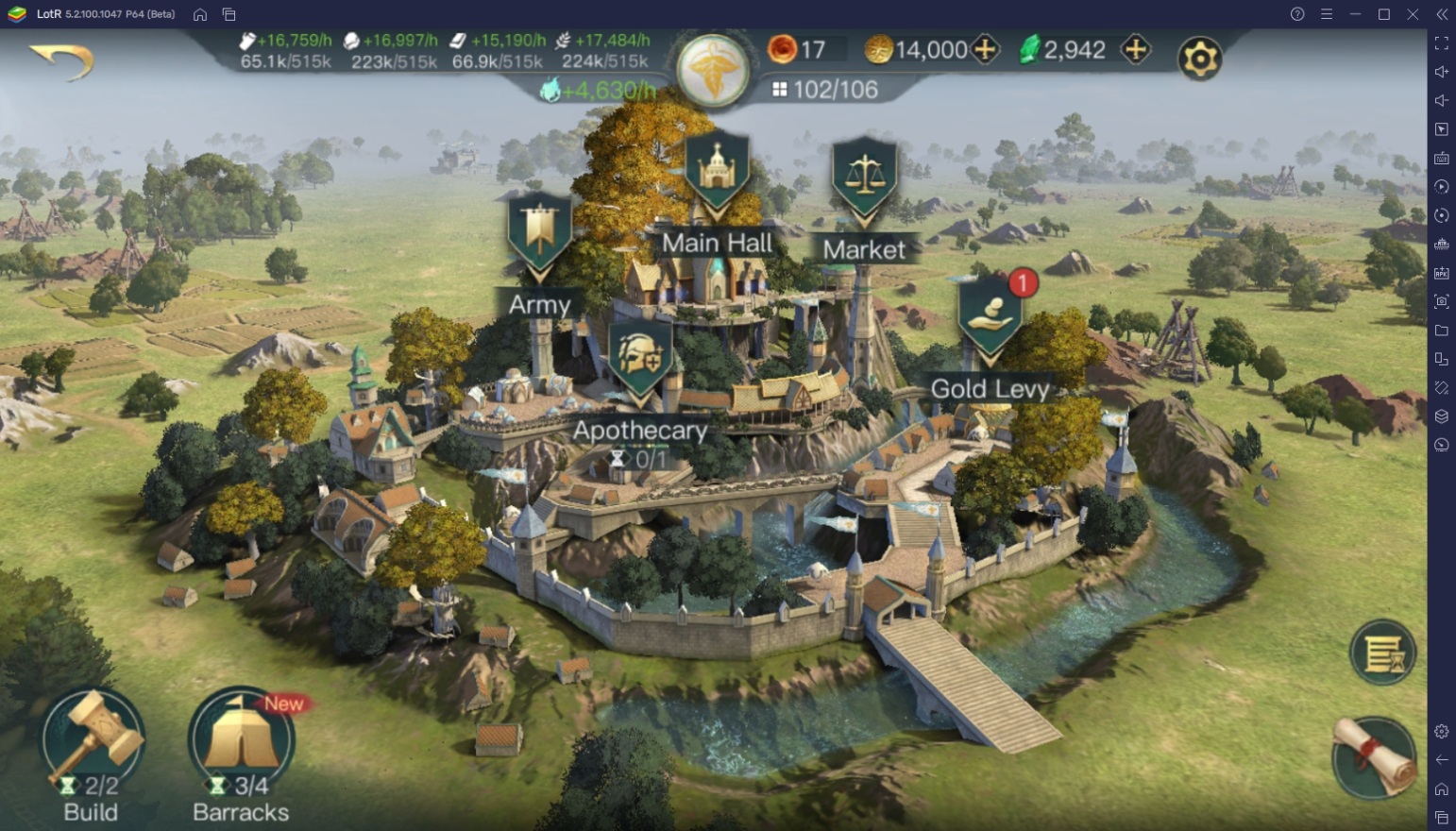
There are a lot of different resources in the game but the primary resources are lumber, stone, ore, grain, and gold. Collecting these resources are important to maintain the primary functions of your city so that it can continuously perform tasks without being left behind. The more active you are as a player, the more demanding the costs will be. Luckily, there are a number of ways for players to produce or collect resources especially if their storage facilities are about to run out.
Production Buildings
The most basic source of resources in The Lord of the Rings: War is Production Buildings. Unlike other RTS games, you can only construct one primary production building per kingdom in this game and will only be able to upgrade it to a higher level to increase production. Other settlements may also produce resources as a secondary effect such as the Elven Quarters (if you’re playing an Elven class) which passive produces lumber albeit in a significantly lower quantity than the Lumber Tribute.
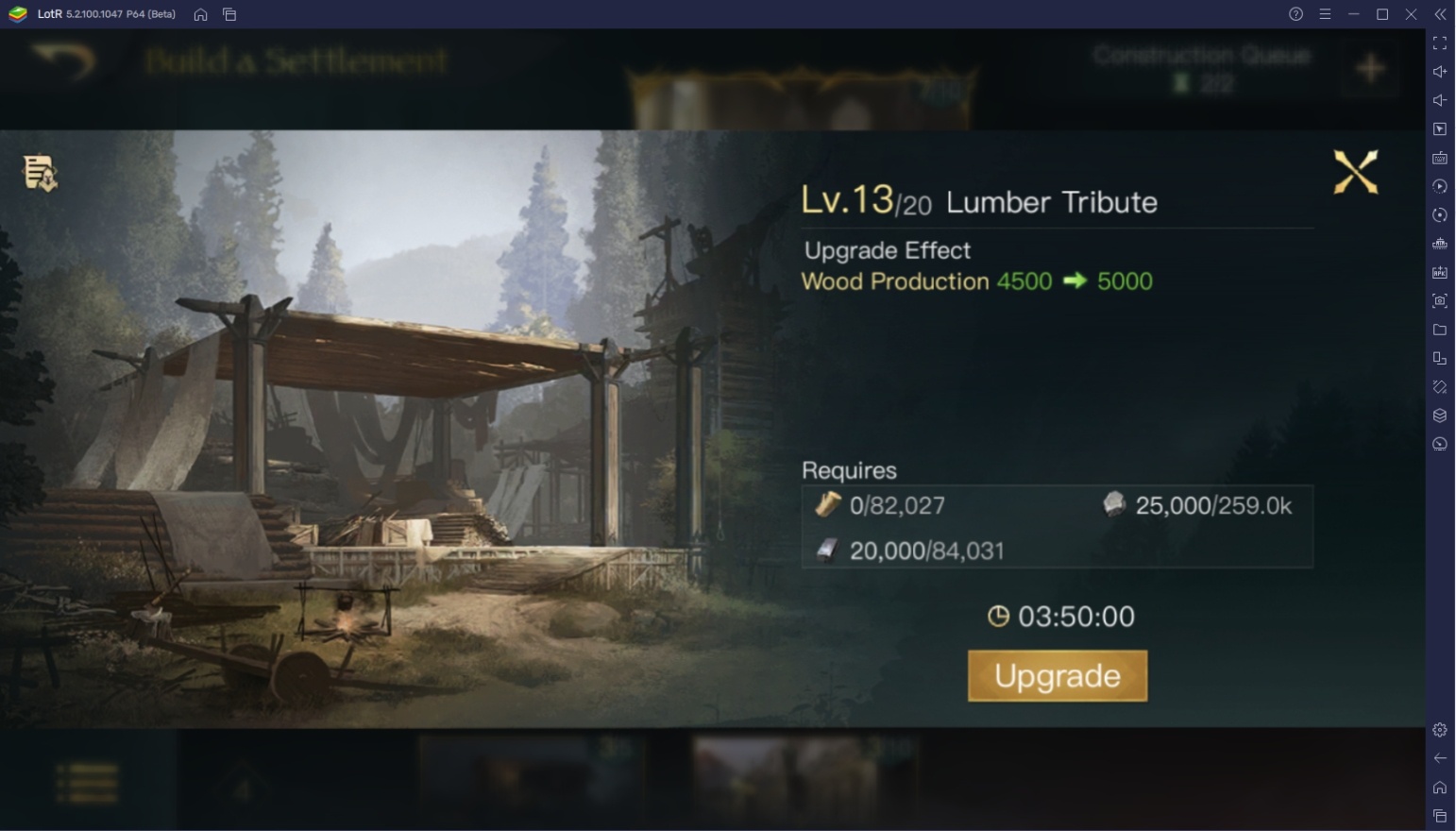
The player’s goal should be to always have all of their primary resource production buildings at max level before anything else. You might be tempted to upgrade something else since it’s more important to your interests but having a constant flow of resources will benefit you more in the long term. These buildings may not be the biggest contributor to your overall resource production but it is the most reliable especially if you’re currently at war with other factions.
Power Tiles
Power tiles are the biggest source of resources in The Lord of the Rings: War. As mentioned in our LotR Beginner’s Guide, the game gives a heavy emphasis on expansion which is done by occupying tiles. Aside from plains, each tile produces a specific resource with the value increases the higher the land’s power level is. Occupying as many tiles as your kingdom possibly can is the best way to increase your production to an insane amount that you’ll never know what it means to be poor.
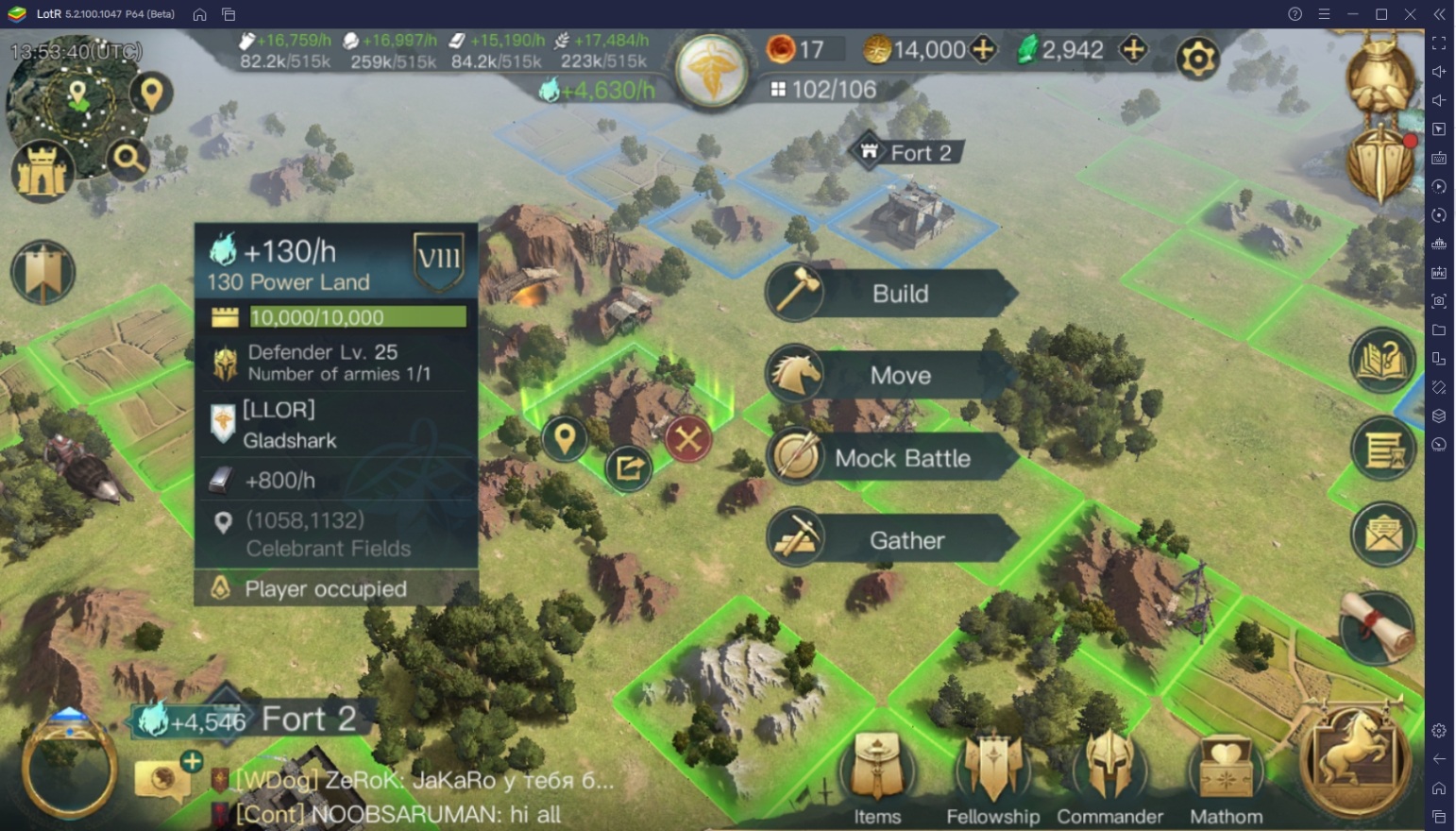
One thing to keep in mind is that players should always try to seize higher-level tiles but should only replace lower-level tiles if they have reached the maximum capacity of territories allowed. Even lower-level tiles produce a lot of resources that can still be useful. Plains should be avoided once you have a strong enough army unless you need them to reach a certain tile farther away from your kingdom. Beware of opposing faction players trying to steal your tiles or you’ll lose a significant amount of resource production.
Resource Gathering
Resource gathering is related to power tiles. Players can send their armies to gather resources from tiles that they’ve occupied to collect the specified resource that the selected tile produces. Take note that players can’t gather resources from plains, forts, and other types of tiles that do not produce resources. This method is a quick way to get resources when you think that you’re about to run out of that specific resource in your kingdom but you’ll have to wait a few minutes for it to complete gathering.
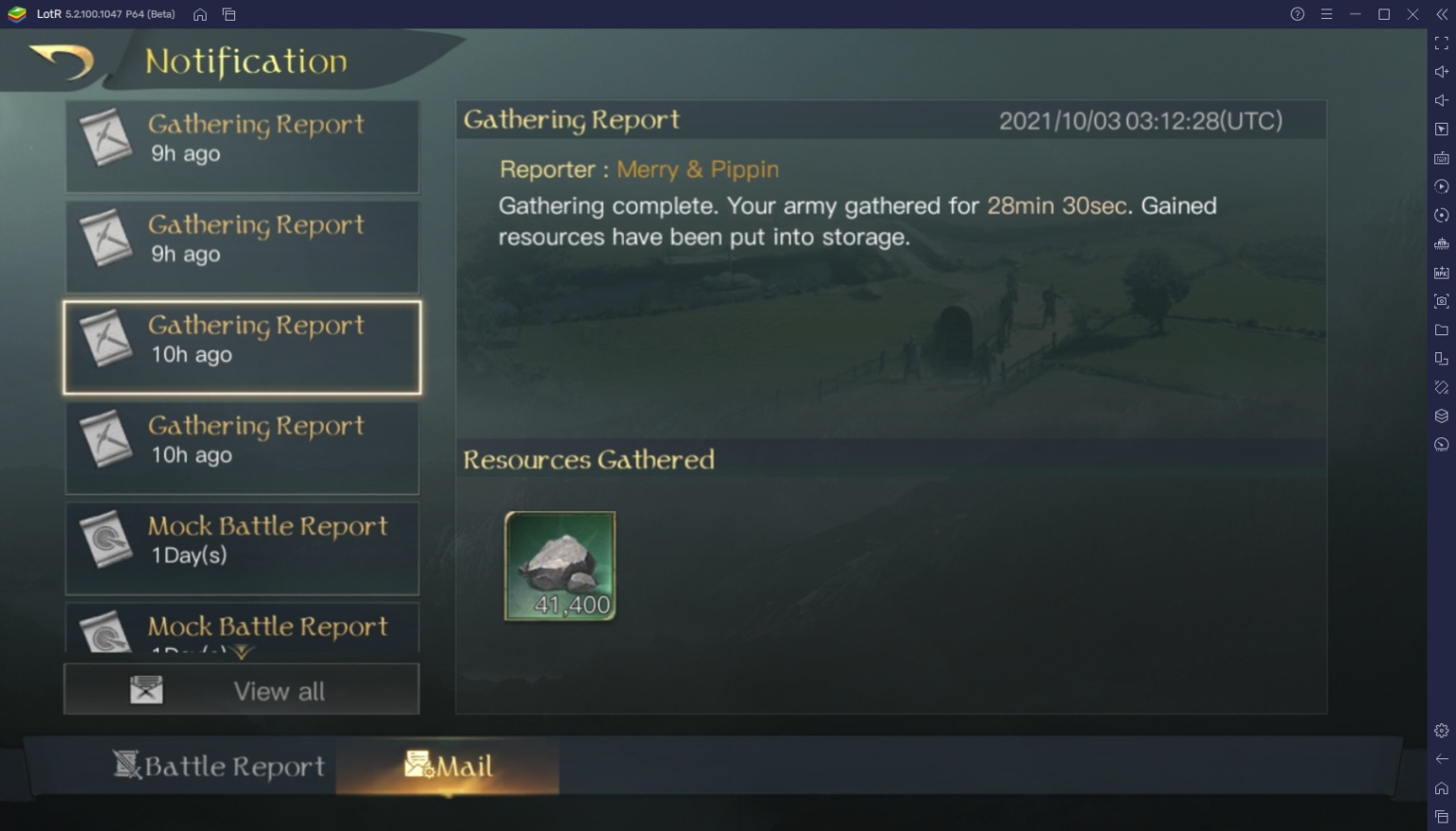
The amount of resources gathered depends on the power of the tile and the size of the army that you are sending to collect it. Sending an army to collect resources will drain stamina and action points. While stamina is quickly recovered, players can only have a certain number of action points per day so they can’t really send armies to gather resources unlimitedly in a day. Only gather resources when you really need them but make sure to do it every day so that you don’t waste action points.
Bartering and Trading
Bartering and trading are good ways to get instant resources but only as a last resort. Once the player has built the Market, they have the option to trade and barter their resources with a different type of resource or item. This is extremely useful since the game doesn’t exhaust all your resources equally depending on the task that you’re currently focusing on in the game. Rather than letting those overflowing resources sit in your storehouse, it might be more productive to trade them off.
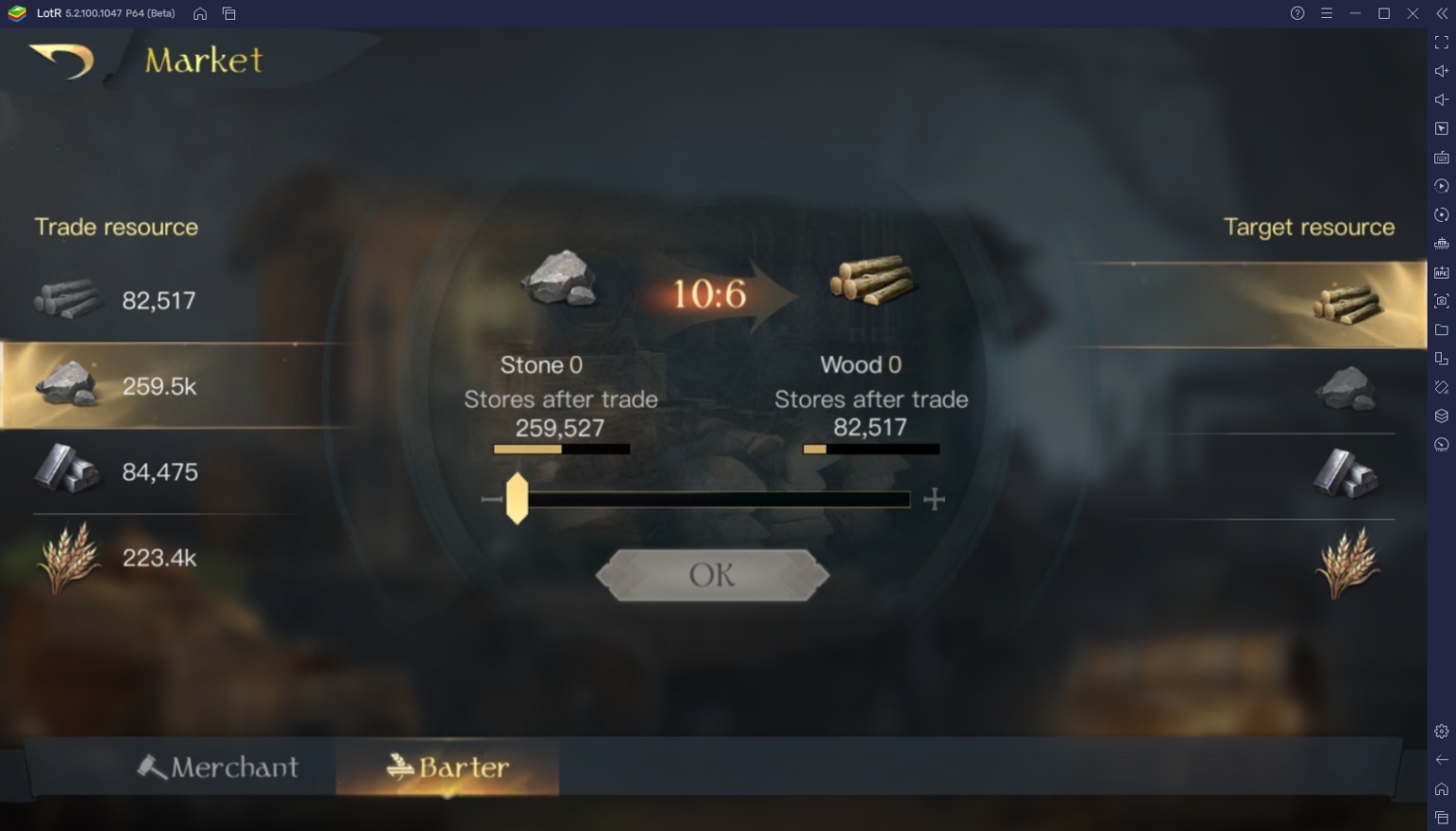
Trading is the best way to exchange your resources since the rate is 1:1. However, players only have a limited number of times that they can trade per day and the type of resources to be traded is random. Bartering allows players to exchange one resource for another of their choice. The problem with this is that the trading rate is 10:4 for a Level 1 Market but the rate equalizes as the structure levels up. If your market is low-level, only use the barter function if you really need the specific resource.
Aside from upgrading buildings and occupying tiles, the other way to increase production is to use upgrades. Upgrades include temporary production buffs, ring buffs, fellowship bonuses, and faction bonuses. These upgrades allow players to increase their overall production passively and permanently. However, some of these are out of the player’s control and will need assistance from their fellows or faction members.
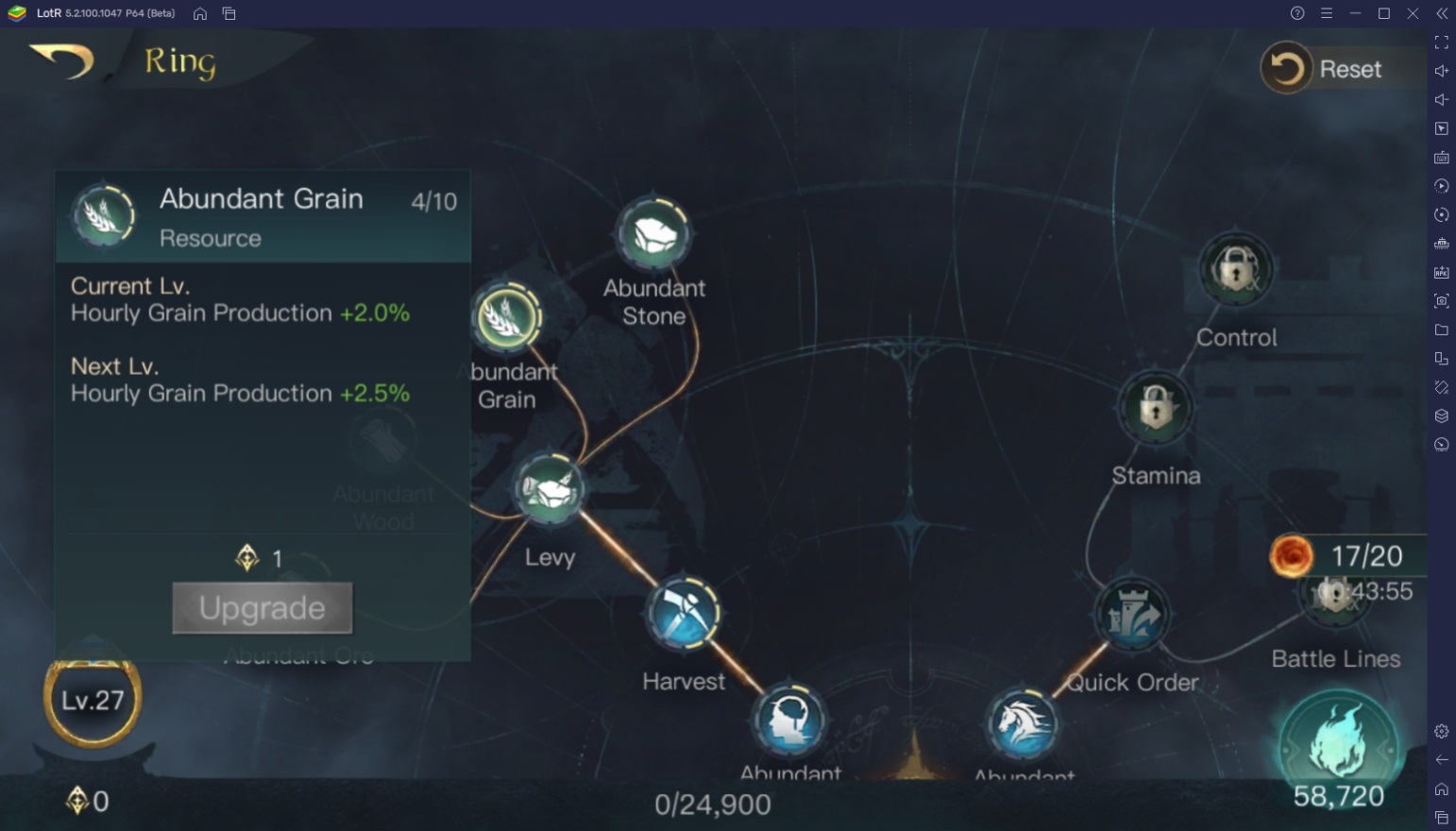
The most reliable way to upgrade your resource production is through Ring Buffs. The ring of power can be used to upgrade your resource production by a small percentage which is enough to create a large impact for the long term. To do this, you’ll need to work on increasing your Power Production through military efforts which we’ll be tackling in the next article.
















